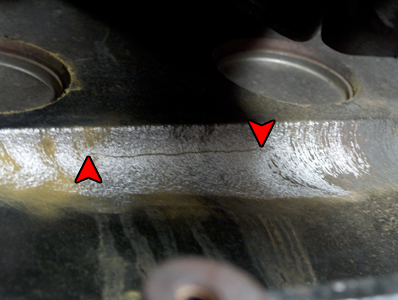Cummins #53 Block Casting Identification
53 blocks can be identified by a "53" casting number located on the side of the engine block. The casting number is commonly seen on the passenger side, below the injection pump, although some #53 blocks have the casting number located on the driver side. If your block does not have a 2 digit casting number, it is likely a less common Mexican cast (produced by Teskid) engine block. These blocks are highly desirable due to their more robust casting design. Cummins identified the problems with the 53 block casting, and as a result # 54 and higher casting number blocks feature increased thickness in the problem regions and an overall stronger block design.

Cummins #53 Engine Block Repairs
The recommended repair method for 53 engine blocks that experience cracking is Lock N Stitch. # 53 block owners have reported favorable success using the Lock N Stitch repair method, and do not experience additional cracking post-repair. Welding is not advised because it could potentially harden the cast iron engine block and is likely to cause cracks to spread or even cause more severe cracks to develop. Cracks commonly develop on the passenger side of the engine, right below the freeze plugs. Automatic transmission owners may have difficulty viewing cracks because they often occur directly beneath the automatic transmission heat exchanger. If you have identified your 24v engine to be a # 53 block casting, become familiar with the region in which cracks typically form. Properly warm your engine after a cold start, especially if you will be towing. Avoid heavy throttle input under load and aftermarket performance parts if you hope to avoid block cracking.

